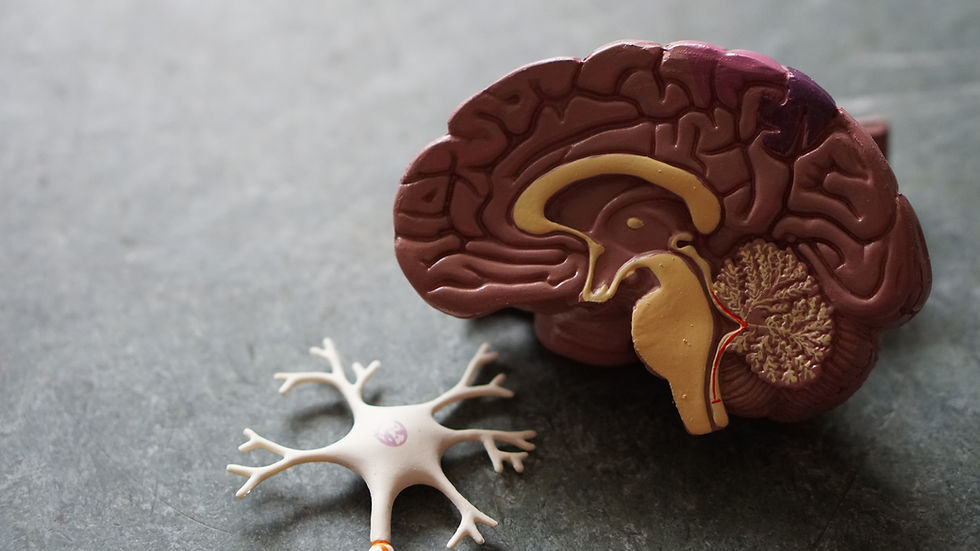In our journey through life, pain is a companion we all encounter. From sharp, shooting pains to persistent, nagging discomfort, the intensity and duration vary. Yet, what many overlook is the ingenious biological workings of our bodies that underlie how we perceive pain. This blog takes a look at a captivating aspect of our pain relief system: the hidden power of our internal pharmacy.
The Hidden Gem: Your Internal Pharmacy

Deep within our brains, in an area called the nucleus accumbens, lies a hidden gem – our internal pharmacy. This compact, deep-seated part of the brain located in the striatum serves as the beating heart of our reward center. A center that governs not only the feeling of pleasure and enjoyment but also plays a crucial role in our motivation. An enchanting cascade of biochemical reactions is triggered whenever we engage in something rewarding, whether it's relishing a tasty meal, exercising, socializing, or simply laughing.
Endorphins and the Magic of Natur
al Pain Relief
Within this reward center, and even deeper, endorphins are created and released in response to various stimuli. These endorphins are, in a way, natural opioids produced by our own bodies to combat pain. Remarkably, these neurotransmitters function similarly to morphine. Just like morphine, endorphins attach to specific receptors in our brains and spinal cord involved in pain processing, effectively blocking the pain signals en route to our brain's pain command center.
The Power of Dopamine and Serotonin
Within this magical internal pharmacy, not only are endorphins produced, but also dopamine. This well-known neurotransmitter is often referred to as the messenger of pleasure and reward. However, its impact extends beyond that. Positive experiences, such as hearty laughter or the enjoyment of a meal, lead to the release of dopamine. This "feel good" neurotransmitter has the power to reduce the perception of pain and contribute to our overall well-being.

And then there's serotonin, the helmsman of our moods and emotions. A shortage of serotonin can not only lead to mood disorders but can also influence our experience of pain. Lower serotonin levels can lower our pain threshold, causing us to perceive pain more intensely.
A Dance of Emotions and Stress
The nucleus accumbens and the reward center are interconnected with other parts of our brains involved in emotions an
d stress responses. This explains why emotions, stress, and pain are often closely intertwined. When stress and negative emotions take the upper hand, they can decrease the production of endorphins, making us more sensitive to pain.
Additionally, stress triggers the production of cortisol. In acute situations, cortisol can be useful by preparing our bodies for a fight-or-flight response. However, when stress becomes chronic, this hormone can have a negative impact, especially in relation to pain. Chronic stress can lead to elevated cortisol levels, which in turn promote inflammation in the body. This ongoing inflammation can amplify the sense of pain and contribute to the development of chronic pain.
Furthermore, increased cortisol can heighten pain sensitivity. This occurs because cortisol can enhance the activity of pain receptors in our bodies, intensifying the perception of pain. In chronic pain patients, this heightened pain sensitivity can contribute to a persistent cycle of pain and stress

Mastering Your Internal Pharmacy
These revealing insights into our internal pharmacy lay the foundation for a fresh perspective on pain relief, where we must be mindful of the biological changes, such as the production of endogenous pain relievers and cortisol, in response to our psychology or social environment. At Pain-Changer, we fully embrace this concept. Our products and services are infused with the knowledge of the internal pharmacy and its potential to transform pain.
Are you interested in learning more about the internal pharmacy or our innovative approaches? Feel free to reach out to us.
Join the Pain-Changer Journey
This marks the end of our journey through this blog post. We sincerely thank you for your attention. If you found this content valuable, we encourage you to share it within your network. Together, we can spread our message further and inspire others.
Important: This article is intended solely for educational purposes and does not provide personal medical advice.

Comments